With great progress since 2010, countries’ military strategies have evolved. What can be observed are rare decrees of openly open wars, but this does not mean that geopolitical conflicts have subsided.
It is in this context that we analyze the so-called “Hybrid Warfare”, a form of military campaign that uses a mixture of political, military, conventional or irregular, propaganda and cyber tactics to “attack” the enemy.

It can occur both in traditional military attacks and by the use of artificial intelligence and by the Internet itself. It is a great game of influences and destabilization. A power relations game that puts credibility and military resources in constant check for indirect threats.
However, Hybrid Wars are not a new phenomenon. Historical wars such as the American Revolution, by George Washington, and the Napoleonic War used mixed techniques for their attacks. Nor is it a phenomenon reserved for the Northern Hemisphere, in Guatemala in the nineteenth century these methods were used to combat the liberals and the Federal Government in the guerrillas of Central America. But nowadays, its use is improved and growing.
Inclusive, the North Atlantic Treaty Organization (NATO) defines Hybrid War as a group of military tactics that opponents use to not declare war openly to another country. The objective is to mask the attack against the international community so that the aggressor country does not suffer the material consequences of this attack (from counterattacks to economic blockades of allies).
Its biggest problem is the passive-aggressiveness of the conflict, but it still threatens the institutions of the attacked country. The hybrid attack is like a form of breach in the International Laws, which aims to circumvent the traditions of international relations, diminishing the power of regulatory bodies and multilateral mediators.
“Hybrid methods create turmoil and disunity among us—they quietly undermine democratic states and institutions, blur the lines between war and peace, and attempt to sow doubt in the minds of target populations, all while avoiding traditional conflict”.
North Atlantic Treaty Organization
Your most recent examples are with the China and the South China Sea or Russia-Ukraine, with attacks by soldiers without uniforms attacking the Ukrainian region, for example. Thus, responsibility cannot fall on Russia as a nation-state, since it was attacks by Russian soldiers disguised as civilian militias (“little green men”).
This type of tactic falls on a grey area, between peace and war, since everything is understood, interpreted and not direct.
Why conflicts via hybrid military campaigns are expanding?
One country declaring war openly on another has several implications, such as political, economic and military competitions. However, this does not apply in the Hybrid Wars, as there are no official declarations of war.
For contemporary international relations, the burden of war is not profitable or productive, at least not when there is the possibility of waging hostilities between the lines without great responsibility.
Of course any opposition in the political environment has consequences, but in this case the camp is closed to the attacker and attacked. This is because the collisions do not occur in light, but in a background, in this fine line of the gray area.
Thus, instead of changing the whole world context of socioeconomic relations with a war, a lot of interpretations and not great certainties are materialized.
Hybrid Wars grow even more with the advancement of technologies in the 21st century, since the internet, for example, is poorly regulated globally. So, cyber attacks with hackers, fake news or with the use of artificial intelligence enter the new war tactics book.
The more free the space for actions to be taken without major military consequences, the more the use of Hybrid War grows.
Hybrid Warfare and the “Grey Zone” between peace and war
When it occurs in this background, without taking sides on either side, this grey area is formed. There is the existence of conflict, but there is no war. What we find is a fragile peace constantly being threatened.
This is an area of extreme ambiguity: between the political debate of states and the geopolitical-military debate.
The undeclared conflict between China and Taiwan since 2010, shows a good example of the functioning of a grey area. With its militia of fishermen, fishing vessels and coast guards, the Chinese advance on the coastal territory of South Asia takes place aggressively and unofficially.
Therefore, what is found is a reconstruction of the defense of Taiwan on its coast, at the same time that there is a denial of China’s attempt to attack.
Thus, in general, the United States and NATO itself have great difficulty of action in these areas, since any movement they take can affect this fragile peace.
While in an openly decreed war the strongest weapons are the military resources, information and capital, in the grey area the narratives and power are what dominate.
New relations are being built between National States and technological innovations to gain greater control of propaganda and influence. The most powerful actor is the one who has a great mastery and expertise in the area of hybrid warfare to be able to act successfully in this area of grey conflict.
It is a situation that requires a multilateral effort to regularize what is considered a military attack or not of the actors involved, because if taken as a space completely without rules this harmful behavior can result in a military escalation that leads to a real armed conflict.
Recent examples of Hybrid Warfare
As we have already mentioned, today the powers of Asia (such as China and Russia) have used Hybrid Warfare for their geopolitical feuds. In addition, the conflict between the Islamic State of Iraq and the Federal Government of the region was also present, for example.
As we have already mentioned, currently the powers of Asia (such as China and Russia) have used Hybrid War for their geopolitical feuds. In addition, the conflict between the Islamic State of Iraq and the Federal Government of the region was also present, for example.
The Islamic State started the terrorist attacks by mixing regular and irregular military techniques against the Federal State in 2014, which caused the government response to also base itself on these methods.
The US, in fact, has a history of involvement in hybrid conflicts today. In 2016, there was a complaint in NATO that Russia was using refugees to weaken the political strength of Europe. It would facilitate the passage of immigrants through its territory to enter the European Union illegally. However, Russia denies any kind of interference, after all, denying hybrid attacks is a key part of the whole strategy. So, the debate takes place in a speculative but tense way.
The American intelligence agencies also accused Russia of using fake news, propaganda, and hacker attacks to influence the 2015 presidential election won by Trump.
Beyond the Russia-US conflict there is the Russia-Ukraine conflict, strained after Ukrainian agreements with the European Union which led Russia to use Hybrid War tactics like the famous “little green men” and fake news to invade and destabilize Ukraine.
In 2021, Belarus’ attack on the European Union was also presumed to be a hybrid attack, from the threat and organization of the immigrant crusade to destabilize the bloc of European nations.
What we can perceive from the Hybrid War is a threat of political insecurity to countries by indirect attacks. Thus, those who are attacked are in a fragile position and dubious action, and cannot respond otherwise than with hybrid tactics as well. While the attacker can leave without any punishment, intending the scenario of international relations without consequences.
It is an attack of threats and power. A game where peace is questioned repeatedly, but without breaking it altogether.


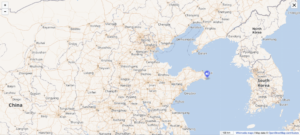

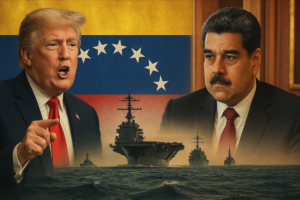

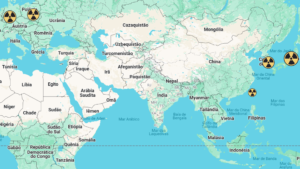
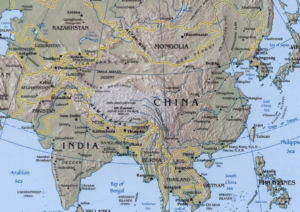




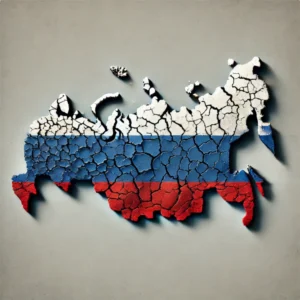
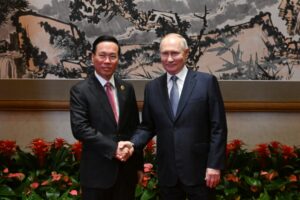
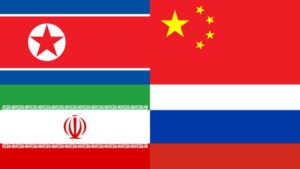




[…] So what we see is a grey area of conflict. […]
[…] The cyber domain is due to the combination of the impacts caused by the Internet and its use in hybrid or disguised military attacks. This is one of the new military camps for technological advancement, widely used in hybrid warfare attacks and grey areas. […]
[…] And the Kremlin has no problems in recall this insecurity and dependence, threatening, where appropriate, to close the European supply … […]
[…] there is the construction of a grey area in this triangular relationship between China-Taiwan-USA, with a fragile peace and a great game of […]
[…] the implicit attacks by Russia in the Eastern territory, which in the past were part of the USSR or were “satellite” countries at the same […]
[…] hybrid tactics, Russia seeks to reaffirm its spheres and its power of influence, because by making threats you can […]
[…] been growing economically and gaining a geopolitical power that threatens the European protagonism. The Russian conflict with Ukraine, since 2014, had the support of the European Union and the United States on the Ukrainian side, something that […]
[…] and operations. With the use of hackers and artificial intelligence, cyber attacks are within a gray area of war conflicts, because their duties are usually not accurate or […]
[…] has been a trend towards more autocratic governments globally. In part, this has been because of Russian hybrid support for extreme political parties in democracies, whether on the left or on the right. With a Russian defeat, its interference in […]
[…] world is organized and polarized depending on its interests and the current context, are part of a hybrid war, with no bellicose attack, but only a diplomatic one, in which China is making steady strides in […]
[…] field of the traditional wars with bombs, tanks, missiles, but will diversify even more. As hybrid tactics are part of future warlike development and we will increasingly see nations attacking their enemies […]
[…] North Korea. It would also diminish anti-West sentiment in Asia, Africa, and Latin America as the Russian anti-U.S. propaganda machine would effectively cease to […]